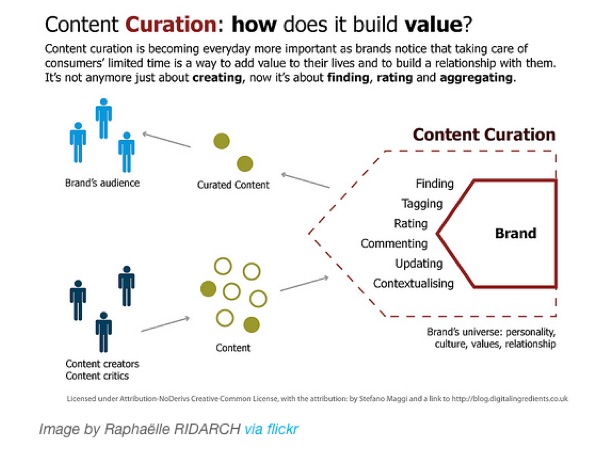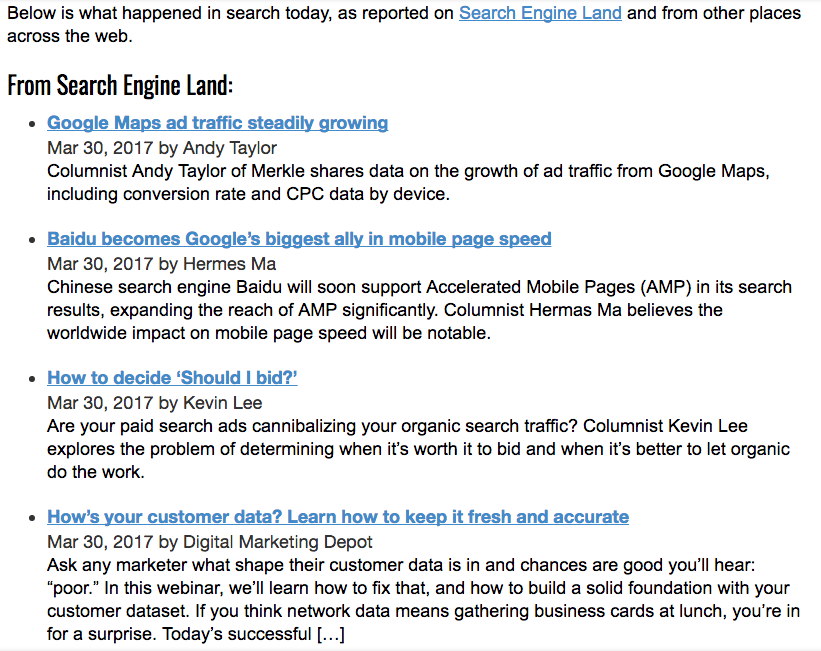When Content Curation Trumps Content Creation
We all know that creating your own original content adds value to your website, both in terms of how users see and understand the authority your company has in the industry that you work in, and for optimal SEO. Quality original content increases your visibility on SERPs, but also puts you in a place to drive as much traffic as possible through organic ranking, social media channels, and other marketing actions (email-ers, site listings, and community boards of all kinds). Search engines like Google place a lot of value on sites that are generating their own content and really have someone doing digital marketing for them regularly.
So what is with the title? When is content curation really more beneficial than content creation? The truth is, with all of the “noise” on the Internet these days it is almost impossible to truly be producing enough quality content to please search engines and users and beat out all of your industry competitors. The other issue is that when businesses can produce content as rapidly as you would really need to be successful, it isn’t always quality—and Google knows! In fact, it is far more important to produce quality content over quantity.
What is Content Curation?
This is where content curation comes into play. Since it is nearly impossible to create quality content as rapidly as is ideal for both SEO and appearance on social channels, content curation is an important task for marketers to take part in for a small or a large business. Content curation involves going through a large amount of content that is found online in your industry (or in relevant industries) and then organizing, sorting, breaking-up, and ultimately, publishing that already produced content. This is typically done by organizing and structuring around themes that you deem valuable to your audience. The biggest difference between content creation and content curation is that with content curation, you are not writing and developing the original content—you are finding the work others have done and are turning it into something new. Below is a great infographic that sums up the idea:
Why Should Marketers Use Content Curation as a Strategy?
When you are able to share content that is relevant to both your target audience and others in your industry, you increase your visibility and share your perspective even if it is not your own original content. When other industry experts see that you are sharing their content and connecting with them on social channels they will be more than happy to connect (who doesn’t want their content being shared in some way, shape, or form, right?). This can really help to build up your audience and extend your reach to others in relevant networks.
Further, it is important to keep in mind that reading through other articles, looking at other infographics, and watching other videos that you did not create yourself can help you learn something and inspire original content that you might want to create! Plus, you are not alone in this task. Only 5% of marketers surveyed said that they never shared 3rd party content. Good marketers take part in content curation. If we were to break down the “why” into some key bullet points, it would be the following:
- It’s a relationship builder, both with other credible sources in your industry who’s content you are sharing and for your target audience.
- It allows you to post more content more frequently. While content curation does not by any means eliminate the need for you to develop your own original content, it does allow you to post as frequently as you really need to without compromising the quality of your content.
- It demonstrates knowledge. You can’t possibly know everything there is to know in your industry (that is why original content requires research, linking, and learning), by sharing other authoritative content you are demonstrating that you care about other knowledge that is being produced and you feel your audience would benefit from that other knowledge as well.
How To Curate Content Successfully
There are a lot of ways that you can implement a content curation strategy for your business. You want to maintain a standard of quality and relevancy, making the task a difficult one at times. Before you begin sharing through your networks channels, you need to consider the following:
Where to Research and Gather
You want to find authoritative sites that are generating content that is valuable to your audience. So for example, if you are a visual production studio that caters to corporate clients and businesses, your audience is probably going to be marketing teams, CFOs, and other business executives—not other photographers/videographers/designers, necessarily. If the content you are producing is for your clients, then you want to find other credible sources that are writing on the topic. If this example were the case, you may want to find articles on the importance of visual marketing or how to put a video production strategy into place for small businesses.
Multiple Content Forms
You don’t just want to share links to blog articles; you want to share all forms of content that you can find! This means videos, infographics, eBooks, webinars, community boards, etc. The more diverse you can make what you are sharing the better, and this means not settling on the first random article that you find. If you can organize multiple content forms into themes to share over time and devise a strategy you are going to be better off.
Plan Ahead before Putting Content Together
Not only do you want to research and find multiple forms of content to share, you want to plan ahead and strategize to be the most effective with what you are finding. This really means doing the research first and then organizing before you share anything.
Comment and Recognize Before Sharing
You always want to comment, connect, tweet, or acknowledge the original author before you share their content. The first reason is that content curation prioritizes networking and extending your reach. The second and equally as important reason is that you need to do all you can to give credit where credit is due.
Where to Share Curated Content
What springs to mind when you think of content curation is where to share the content that you find. Here are some suggestions to get you started:
- Curated Blog Posts. Collecting resources for your audience around the Internet and sharing them in a weekly, curated blog post is one way you can use other’s content in an original way. Make your title something like “the best of the week in digital marketing” or something that explains that it is not your own original work, but you did the groundwork to find it. Below is an example from Search Engine Land, who curates content every Friday. Notice how they also curate their own content (great if you do have a large output):
- Weekly Newsletters. Have you found some great content this week? Share the links in an organized, creative, and formatted way with your audience! Weekly curated newsletters can save your audience some time in finding good content when you’ve done the research for them, and this can be extremely valuable.
- Social Media. Of course, Facebook, Twitter, Tumblr, and LinkedIn are all good places to connect and share content as well. These platforms are great for audience building and demonstrating industry knowledge to your following.
What do you think about content curation? How do you plan to implement a strategy for your business? Let us know in the comments section below!
Image Credit 1: hootsuite.com
Image Credit 2: screenshots taken by author March, 2017











